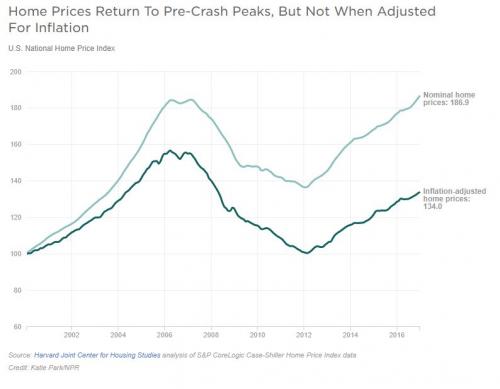
As we’ve noted time and time again, the fact that average national housing prices appear to have recovered from the peak of the housing bubble masks the uneven nature of America’s economic recovery: While certain popular coastal markets have seen prices recover, much of the south and Midwest have struggled with stagnation or even home-price deflation.
Now, a new tabulation of home-price data by Harvard University’s Joint Center for Housing Studies provides a granular look at the unevenness of the recovery from county to county.A quick glance at the map reveals how home-prices – a worthy proxy for wealth inequality – have risen dramatically along the coasts, while
The data show that home prices increased by 40 percent or more in 153 metros (16 percent), including twelve metros where home prices doubled. And in nearly 300 markets, prices increased – but more modestly—by less than 20 percent. Meanwhile, real prices declined in about 280 metros. In another 200 markets, prices increased by 20-to-39 percent.

San Francisco, Nashville and Pittsburgh are among the 15 percent of housing markets around the country where prices have actually risen above their prior peaks in the mid-2000s after adjusting for inflation. Less fortunate are Cleveland, Phoenix and much of Florida, where prices are still at least 26 percent below where they were before the bubble burst.
However, examining the data in real terms tells a different story: adjusted for inflation, home prices remain nearly 20% below their pre-crisis peak.
Americans curious to see how inflation-adjusted home prices are doing in various parts of the country, can find the answer courtesy of this interactive map from Harvard University’s Joint Center for Housing Studies, which reveals what prices are doing in various parts of the country.
This is why William Wheaton, a housing economist at MIT believes the market hasn’t recovered yet: Because Americans who bought when home prices were at their highs are still effectively in the red.He says not enough homeowners are “sitting on top of little nest eggs of equity and can say, ‘Oh, you know, now we can go buy the house down the street we always wanted.’ “















